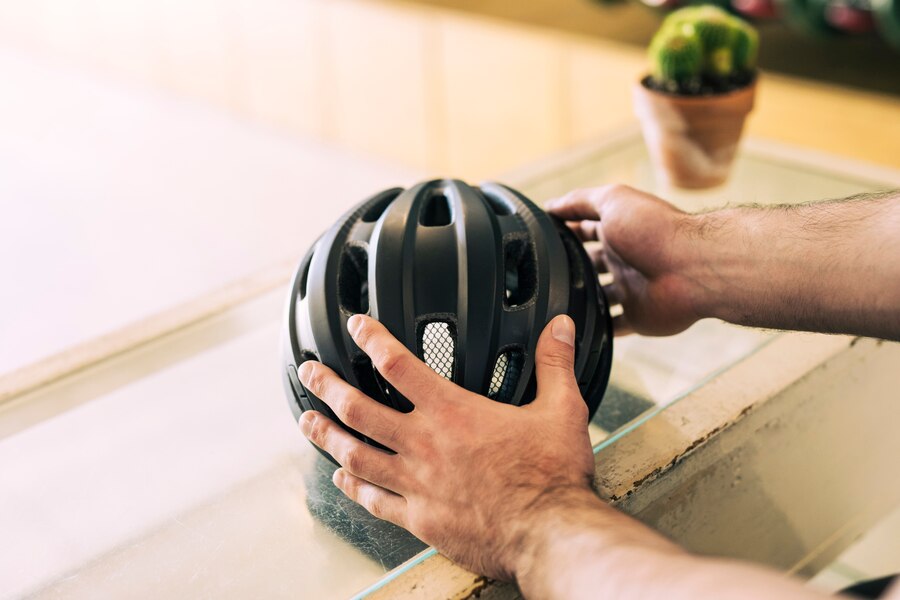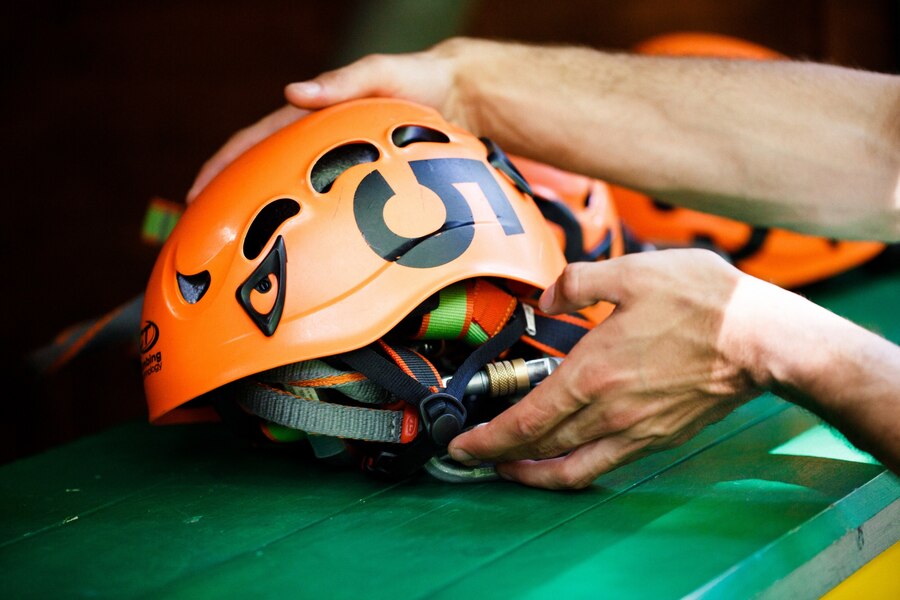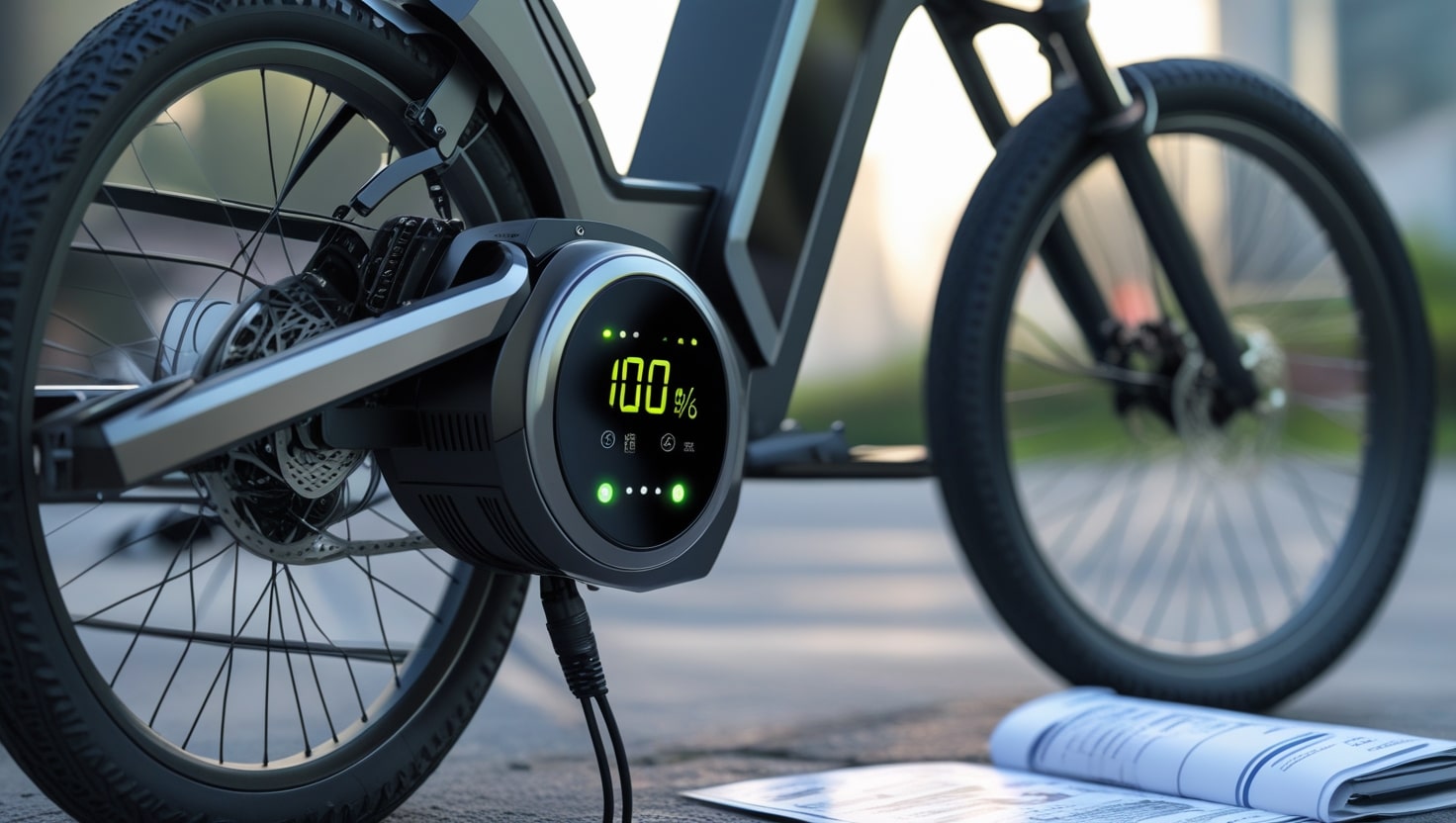When it comes to riding a bike, having a well-fitting helmet is vital for your safety. A helmet that fits correctly is essential for ensuring maximum protection in case of an accident. Loosely fitting helmets can shift out of place, increasing the risk of a dangerous head injury.
On the other hand, an excessively tight-fitting helmet can be both uncomfortable and possibly unsafe. Through personal experience, I’ve learned that the right fit can make all the difference between a safe ride and a hazardous one.
To correctly measure for a bike helmet, start by using a measuring tape around the widest part of your head, typically just above your eyebrows. Whether you’re sizing a road bike helmet or a mountain bike helmet, the process is the same. This guide aims to help you find how to measure for bike helmet
Once you have your measurements, refer to the helmet sizing chart to find your ideal fit. Remember, a proper fit is not just about comfort but also about staying safe on your rides. So take the time to measure and select the right helmet to ensure your safety and protection.
How to find the right bike helmet size at home
Measuring for the correct helmet size at home is easy with a few simple steps. Start by using a flexible tape measure to find the fit range for your head. Wrap the tape around your head, just above your eyebrows and ears, to get an accurate measurement in cm. Refer to the chart below to determine your size.
| Helmet Size | Fit Range (cm) | Classification |
|---|---|---|
| 46-50 | 46, 47, 48, 49, 50 | Toddler |
| 48-52 | 48, 49, 50, 51, 52 | Child |
| 50-55 | 50, 51, 52, 53, 54, 55 | Youth/XS |
| 51-57 | 51, 52, 53, 54, 55, 56, 57 | Small |
| 51-58 | 51, 52, 53, 54, 55, 56, 57, 58 | S/M |
| 54-60 | 54, 55, 56, 57, 58, 59, 60 | Medium |
| 55-61 | 55, 56, 57, 58, 59, 60, 61 | M/L |
| 58-63 | 58, 59, 60, 61, 62, 63 | Large |
| 60-66 | 60, 61, 62, 63, 64, 65, 66 | X-Large |
Once you have your measurement, compare it to the fit ranges for the different classifications, such as Toddler, Child, Youth/XS, Small, S/M, Medium, M/L, Large, and X-Large. This will help you find the right size for a helmet that fits properly.
How are helmets sized?

Size notation on helmets varies between manufacturers. While more affordable budget bike helmets sometimes offer a one-size-fits-all design, many bike helmets come in a range of sizes. This helps provide a secure and comfortable fit. Some manufacturers opt for a range of head diameters (for example, size 52 to 56cm), while others go for variations on a small, medium, or large scale.
For brands that use word-based sizes instead of numbers, they always provide a size chart for reference. From this chart, you can find the diameter range of each size. All sizing charts are brand-specific, and many brands produce size guides for individual models of helmets. So, it’s important to check before you buy a new helmet.
The majority of bicycle helmets, except some full-face downhill and enduro helmet models (which come with replaceable internal foam pads of different thicknesses), are equipped with some form of adjustable cradle. This cradle can accommodate a variety of head sizes within a defined size range.
Finally, not all heads are the same shape. In a similar vein to cycling shoes, helmets can also vary in shape from one brand or model to the next. Once again, it’s best to try before you buy to find the perfect fit.
- Related Post
- Can You Ride Dirt Bikes on the Road
How to measure your head for a helmet

When buying a new helmet, it’s advisable to measure your head and check it against the brand’s size chart to find the correct size. Helmets are designed to fit just above your eyebrows and ears, so this is the best place to measure your head to guarantee a proper fit.
To get the best results, use a flexible fabric tape measure. If you don’t have one, look in a sewing kit or a biscuit tin where such items often hide. Alternatively, you can use some string and measure it afterwards. Make sure the fit is snug, but not constricting, to ensure comfort and safety.
Avoid using a metal tape measure from the toolbox as they are not designed to measure curves and won’t lie flat around your head, giving wrong results. Following these steps will help you find a helmet that fits well and keeps you safe while riding your bike.
You may also like to read Can You Ride Electric Bikes in the Rain?
How to adjust the fit of a helmet

Once you’ve measured your head correctly, there should be only minimal adjustment required to get the perfect fit. Pop the helmet on your head so it sits above your eyebrows and ears. Adjust the cradle using the dial at the rear of the helmet. This adjuster will either tighten the cradle or, on some helmets, tighten a band that runs around the full circumference of the helmet.
There’s often the option to adjust the rear of the cradle up or down to ensure it fits comfortably. The chin strap should be snug but not constricting. If the helmet features replaceable padding, you might have to try several iterations to get the fit just right. Make sure the fit is snug and the helmet doesn’t rotate in any direction. As mentioned, it should sit just above your eyebrows and not be tilted back or forward on your head.
By taking the time to properly adjust your helmet, you ensure that it provides the best possible protection while remaining comfortable. Every helmet is designed differently, so find the adjustments that work for you and enjoy your ride with peace of mind.
Does MIPS affect helmet sizing?
Recent advancements in tech have resulted in helmets where the outer shell can rotate independently of the cradle. This improvement is aimed at enhancing the overall safety of the helmet. The most common form of this technology is the MIPS liner, often seen as the yellow part in photos of MIPS helmets. These helmets frequently perform well in independent tests, ranking among the safest cycling helmets.
When MIPS was first introduced, it was retrofitted into existing helmets on the market. This impacted the size of the helmet by adding a 0.5 to 0.8mm layer, which reduced available headspace. However, this is no longer the case. MIPS now works with brands during the development stage of producing helmets, so the technology is integrated into the overall design.
MIPS may introduce a small amount of movement to your helmet, approximately 10 to 15mm. This can feel a bit disconcerting when initially adjusting the helmet. As long as this movement is small and confined to the outer shell and not the cradle, there’s nothing to worry about.
Can I have a ponytail or wear a hat with a helmet?

Some things can prevent a proper fit with a bike helmet, and a ponytail is a common issue. While some helmets are designed to accommodate this hairstyle with a large exit port at the rear, others are not. You may need to style your hair differently or choose a helmet designed to suit your hairstyle.
If necessary, you can wear thin hats and cycling caps under the helmet, provided they do not affect the fit. However, for safety reasons, it is advisable to avoid wearing beanies or hoods under your helmet. The thickness of these items will also affect the fit of the helmet.
How to choose the right size kids' bike helmet
As children grow, the problem of finding the right head size for a bike helmet becomes evident. Just like their bikes, it’s important to ensure the helmet fits properly. The wrong answer is to buy a larger helmet for them to grow into, as it won’t provide the necessary protection.
Children’s helmets are often listed as baby, toddler, kids’, and youth, though brands may use different classification systems. Measurements vary between brands, so it’s important to measure your child’s head circumference and check the size range for the specific helmet model on the maker’s site, or on the helmet or its box.
Always try the helmet before buying. Kids can be fussy about how things fit or feel, especially if they’ve never worn a helmet before. It might feel funny or they might say they don’t like it. Use the helmet adjuster to ensure a close fit that’s not too tight. The helmet should not wobble or move on their head, and should stay in place without the straps when they bend forward.
Don’t be swayed if your child insists the sizing is incorrect. If it fits as described, it is likely correct. Avoid letting them push it back off their brow; they will get used to it with time. We promise this will provide the best protection and comfort for your child.

FAQs
How do you know what size bike helmet to buy?
To determine the correct bike helmet size, measure the circumference of your head about an inch above your eyebrows and ears. Use this measurement to compare against the size chart provided by the helmet manufacturer. Helmet sizes typically range from small to extra-large and correspond to specific head measurements. Always refer to the manufacturer’s guide, as sizes may vary slightly between brands. Trying on different helmets can also help ensure the best fit.
How to measure a helmet size?
To measure your helmet size, wrap a soft measuring tape around your head, positioned about an inch above your eyebrows and ears. Ensure the tape is level and snug without being too tight. Record the measurement where the tape meets. Measure twice for accuracy. Use this measurement to consult the manufacturer’s size chart to find the appropriate helmet size. If a tape measure isn’t available, use a piece of string and then measure the string with a ruler.
Should you size up or down for bike helmet?
When choosing between two sizes, opt for the one that fits snugly without causing discomfort. A helmet should sit level on your head, covering your forehead, and fit securely without being too tight. If a helmet feels too tight or causes pressure points, it’s best to size up. Conversely, if the helmet is too loose and moves around, size down. Always adjust the straps and padding to fine-tune the fit for maximum comfort and security.
How to measure your head for a helmet without tape?
If a measuring tape is not available, try using a piece of string or ribbon instead. Wrap it around your head about an inch above your eyebrows and ears, ensuring it is level and snug. Mark or cut the string where it meets. Lay the string flat and measure its length with a ruler or yardstick. This measurement can be used to determine your helmet size by comparing it to the size chart provided by the helmet manufacturer.
How do I measure myself for a bike helmet?
To measure yourself for a bike helmet, first, get a soft measuring tape. Wrap it around your head about an inch above your eyebrows and ears, ensuring it is level and snug. Record the measurement where the tape meets. Measure twice for accuracy. If you don’t have a tape measure, use a string and then measure the string with a ruler. Use this measurement to consult the manufacturer’s size chart to find your appropriate helmet size.
How to properly fit a helmet?
To properly fit a helmet, place it level on your head, covering your forehead. Adjust the side straps to form a “V” shape under and slightly in front of your ears. The chin strap should be snug but comfortable, allowing you to open your mouth wide without feeling too tight. Use the provided inner padding to fine-tune the fit. Perform a shake test by moving your head side to side and up and down; the helmet should stay in place without excessive movement.








